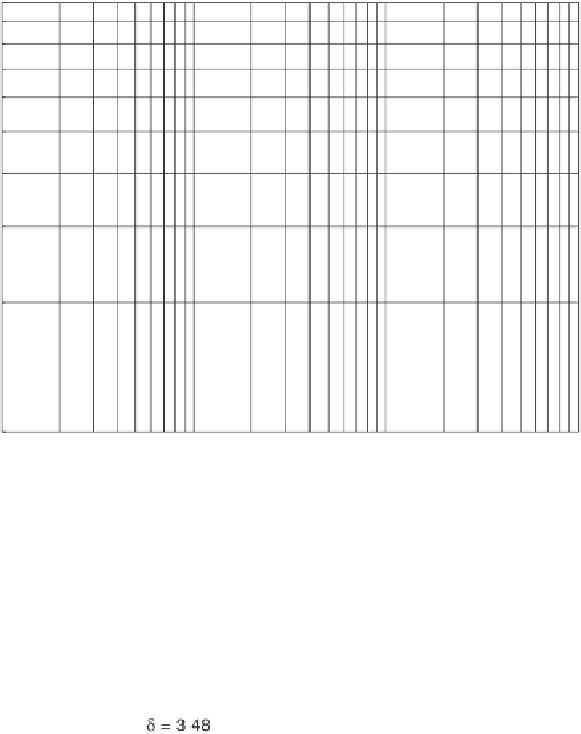Environmental Engineering Reference
In-Depth Information
100
90
80
70
60
Wate
r
50
40
30
20
Hygiene sandstone
10
0.1
1
10
100
Relative permeability,
k
rw
, %
(a)
100
90
80
70
60
50
Ai
r
40
30
20
Hygiene sandstone
10
0
.
1
1
0
1
0
0
Relative permeability,
k
ra
, %
(b)
Figure 7.10
(a) Relative water and (b) relative air permeabilities as function of degree of
saturation during desorption (after Brooks and Corey, 1964).
the relationship between the coefficient of permeability and
matric suction.
The question might well be asked, “Why not simply define
the water content versus water coefficient of permeability
(which has essentially no hysteresis) and use this relation-
ship when solving practical engineering problems?” Exam-
ination of the solution of practical problems shows there is
nothing is to be gained through use of the water content ver-
sus water coefficient of permeability relationship because the
partial differential seepage equation also requires a relation-
ship between water content and soil suction during the solu-
tion. The water content versus soil suction then encounters
nonlinearity and hysteresis. Consequently, it is just as easy to
use the permeability function (i.e., soil suction versus coef-
ficient of permeability) when solving the partial differential
seepage equation for hydraulic heads in an unsaturated soil.
The engineer must decide how the effects of hysteresis will
be accommodated during the solution of a practical problem.
Drying and wetting boundary curves produce hysteresis





































Search WWH ::

Custom Search